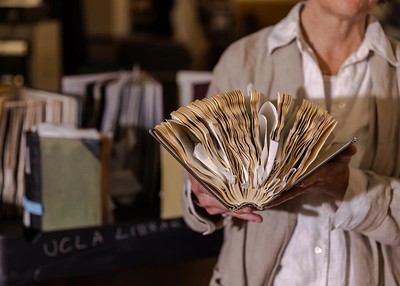
PREV ARTICLE
NEXT ARTICLE
FULL ISSUE
PREV FULL ISSUE
LIBRARIES AND CLIMATE CHANGEFor bibliophiles, Michael Sullivan passed along this interesting New York Times article on libraries and climate change. Thanks. Scary. -Editor At Tulane University, 1.5 million books and manuscripts were drenched when Hurricane Katrina swept through Louisiana in 2005. In 2018, the University of California, Los Angeles was in talks to receive a donor's collection when it was destroyed in the Woolsey fire. And the following year, the Getty fire sent up thick, black plumes of smoke that threatened to filter into U.C.L.A.'s libraries and damage the fragile materials housed inside.
But luck is not a safeguard against the growing threat posed by extreme weather events such as wildfires and floods to book collections, even collections housed in professional facilities. As those events have become more common as a result of climate change, preservationists across the United States know they must adapt their practices to keep books and archives safe. But the solutions can raise their own set of sustainability issues.
Many experts feel they are in a race against time. A 2018 study published in the Climate Risk Management journal assessed 1,232 archival repositories in the United States and found that nearly 99 percent were Both immediate and long-term strategies are needed to keep books secure in changing environments, experts say, but some threats are more insidious than wildfires or hurricanes. Shifts in temperature and humidity from climate change can have large consequences. Archivists and conservators in Cincinnati, for example, are worried about big temperature swings in a single day. Humidity is on the rise in Southern California, where the climate is historically dry; most preservation systems in the area aren't designed to manage precipitation.
To read the complete article, see:
Wayne Homren, Editor The Numismatic Bibliomania Society is a non-profit organization promoting numismatic literature. See our web site at coinbooks.org. To submit items for publication in The E-Sylum, write to the Editor at this address: whomren@gmail.com To subscribe go to: https://my.binhost.com/lists/listinfo/esylum All Rights Reserved. NBS Home Page Contact the NBS webmaster 
|

